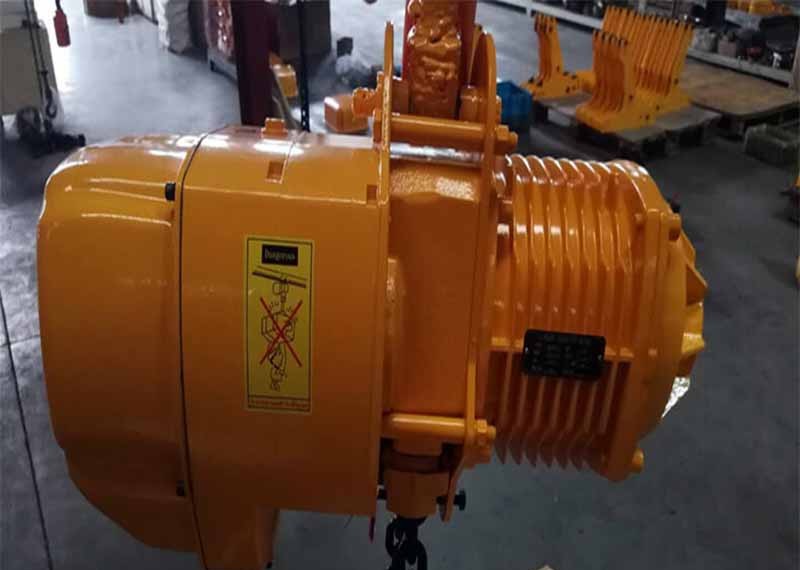
The difference between CD/MD type electric hoist and HC type electric hoist
CD/MD electric hoist and HC electric hoist belong to the wire rope electric hoist, but their functions and appearance are different.
Functional difference: The CD/MD type electric hoist is generally less than 16 tons, and the HC type electric hoist is mostly 16-100 tons, which has a large lifting capacity. Both CD and HC electric hoists are constant-speed electric hoists, and MD electric hoists are two-speed electric hoists. Under normal circumstances, the slow speed of the double-speed increase of the electric hoist is one-tenth of the fast speed.
Appearance difference: CD1, MD1 wire rope electric hoist drum cover is cylindrical. The reel cover of HC and HM electric hoist is square drum type. The mechanical strength is better than the cylindrical type. However, the square tube cover of the same standard and the same type of electric wire rope hoist is larger than the tube type, and the lifting speed is slower. Reel covers of less than 16 tons can also be made into square shapes, such as metallurgical electric hoists and some non-standard electric hoists.
Double hook electric hoist is a wire rope electric hoist with two lower hooks. It is mainly suitable for raising and lengthening heavy objects. It can realize simultaneous lifting and single lifting of double hooks. There is a certain interval between the two lower hooks of the double hook electric hoist, otherwise the two hooks may collide. Is the hook distance between the two hooks of the double hook electric hoist fixed? Theoretically speaking, the hook distance of the double hook electric hoist with fixed type and fixed parameters is /confirm/ied. But because many double hook electric hoists are customized, the specific hook distance can be given according to the customer's requirements, and a more suitable hook distance plan can also be given. The hook distance of the double hook electric hoist is generally 1.2m≤L≤7m (L is the hook distance). The setting of the hook distance is to ensure that the two hooks do not collide, and also to maintain the balance of the suspended object. Therefore, the setting of the hook distance is generally based on the length of the object to be lifted.


